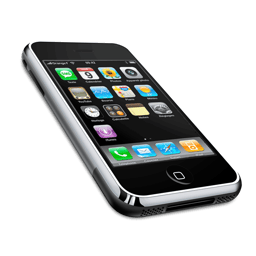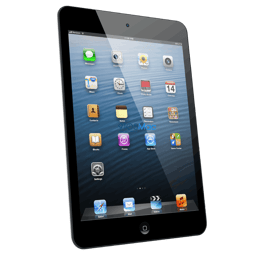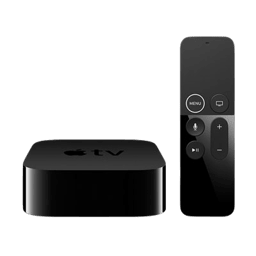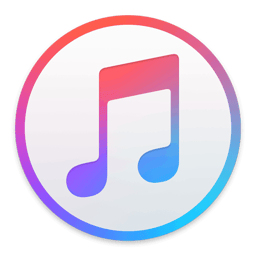"
# Steve Jobs Digital Museum
1. Macintosh
2. iPod
3. iPhone
4. iPad
5. Apple Watch
6. Apple TV
7. HomePod
8. Apple Vision Pro
9. Software
10. Services
---
### A Journey Through Innovation
Discover the legacy of Apple Inc., a company that revolutionized technology and shaped modern life. From iconic devices like the iPhone and Mac to groundbreaking services and visionary innovations, the Steve Jobs Digital Museum celebrates the milestones, design, and creativity that define Apple’s journey.
---
### 1. Macintosh

The Macintosh, affectionately known as the Mac, was conceived in 1979 by Jef Raskin, an Apple employee who envisioned an easy-to-use, low-cost computer for the average consumer. Raskin named the computer after his favorite type of apple, the McIntosh. The initial team consisted of Raskin, hardware engineer Burrell Smith, and Apple co-founder Steve Wozniak.
In 1981, Steve Jobs joined the Macintosh project. He gradually took control of the project due to Wozniak’s temporary absence after an airplane crash. The Macintosh, with a 9-inch monochrome monitor built into the case, was launched in January 1984, after Apple’s iconic “1984” advertisement during Super Bowl XVIII.
The Macintosh was the first commercially successful personal computer to feature two known but still unpopular features — the mouse and the graphical user interface, rather than the command-line interface of its predecessors. This was a significant shift in the way people interacted with computers, making them more accessible and user-friendly.
In 1987, the Macintosh II introduced color graphics. Through most of the 1990s, the Mac was not fully competitive with commodity IBM PC compatibles. However, the return of Steve Jobs to Apple in 1996 led to a resurgence of the Mac, with the release of the iMac G3 in 1998 and the transition to Intel processors from 2005 to 2006.
The Macintosh line has continued to evolve and innovate over the years, with high pixel density Retina displays debuting in the MacBook Pro in 2012. In the 2010s, the Mac was reinvigorated with new high-end Macs and the transition to Apple silicon, which had originated in iOS devices.
Today, the Macintosh product lineup includes the MacBook Air and MacBook Pro laptops, and the iMac, Mac Mini, Mac Studio, and Mac Pro desktops. All Macs are sold with the macOS operating system, a testament to Apple’s commitment to creating a seamless integration of hardware and software.
The Macintosh has not only been a series of computers but a symbol of Apple’s philosophy of technology that’s powerful, easy to use, and designed with the user in mind. It’s a testament to Apple’s commitment to innovation and design, and its enduring impact is seen in every product that Apple creates.
Sources:
- [Mac (computer) - Wikipedia](https://en.wikipedia.org/wiki/Mac_%28computer%29)
- [Macintosh by Apple - Complete History of Mac Computers - History-Computer](https://history-computer.com/technology/macintosh-by-apple-complete-history-of-mac-computers/)
- [Apple Macintosh Microcomputer | National Museum of American History](https://americanhistory.si.edu/collections/object/nmah_334371)
- [Apple Macbook Pro 15 Retina On Table High-Res Stock Photo - Getty Images](https://www.gettyimages.com/detail/photo/apple-macbook-pro-15-retina-on-table-royalty-free-image/1255703482)
---
### 2. iPod

The iPod, a line of portable media players, was one of the most influential gadgets ever created. It was first released by Apple on October 23, 2001, about 8 1⁄2 months after the Macintosh version of iTunes was released. This pocket-sized music player revolutionized the way we listen to tunes on the go.
The iPod wasn’t the first MP3 player. A number of companies had released MP3 players before Apple unveiled what came to be one of its flagship products. But the iPod was the first truly great MP3 player, and it was the one that turned the MP3 player into a must-have device for most people.
The original iPod didn’t have the most storage capacity or the most features, but it did have a dead-simple user interface, terrific industrial design, and the polish that define Apple products. It quickly attracted accolades and strong sales. The iTunes Store wasn’t introduced until 2003, so users had to add music to their iPods from CDs or other online sources.
As technology evolved, the iPod evolved with it, often helping to drive innovations and evolutions. Over the years, various iPod models were introduced, including the iPod Mini, iPod Nano, iPod Shuffle, and iPod Touch. Each model brought new features and improvements, reflecting Apple’s commitment to innovation and user experience.
By 2022, Apple had sold an estimated 450 million iPod products. However, with the rise of smartphones, particularly the iPhone, the iPod’s popularity began to decline. The iPod line was officially discontinued on May 10, 2022, marking the end of an era.
Despite its discontinuation, the iPod’s legacy lives on. It transformed the music industry, changed the way we listen to music, and set the stage for the era of digital music and streaming services. The iPod is a testament to Apple’s ability to redefine markets and create products that resonate with consumers.
Sources:
- [Hello there! Let‘s Explore the Complete History of Apple‘s Iconic iPod - History Tools](https://www.historytools.org/resources/the-complete-history-of-the-ipod)
- [iPod - Wikipedia](https://en.wikipedia.org/wiki/IPod)
- [History of the iPod: From the First iPod to iPod Classic](https://www.lifewire.com/history-ipod-classic-original-2000732)
---
### 3. iPhone

The iPhone, a series of smartphones, is one of Apple’s flagship products that has truly revolutionized the world of mobile technology. The development of the iPhone by Apple Inc. began in the early 2000s and the first iPhone was released in 2007.
The idea of an Apple phone came from Jean-Marie Hullot, a software engineer from NextStep, and later, MacOS. Initially, making an Apple phone was not favored by CEO Steve Jobs, but eventually Hullot was able to convince him. The project within Apple Inc. for developing the iPhone began with a request in 2004 from CEO Steve Jobs to the company’s hardware engineer Tony Fadell, software engineer Scott Forstall and design engineer Sir Jonathan Ive to work on the highly confidential "Project Purple".
The iPhone was the first smartphone to feature a multi-touch interface, allowing users to control the phone by dragging their fingers across the glass display. It combined a mobile phone, an iPod, and an Internet communication device in a single handheld product.
Over the years, Apple has released multiple iPhone models, each bringing new features and improvements. As of 2023, Apple had released 42 different iPhone models, including the latest iPhone 15 lineup. Each new model of the iPhone introduced new technologies and features that set new standards for the smartphone industry.
The iPhone has had a profound impact on society and culture. It has changed the way we communicate, work, and entertain ourselves. It has also played a significant role in the rise of mobile applications and the app economy.
Today, the iPhone is more than just a product. It’s a testament to Apple’s innovation, design philosophy, and its vision to create technology that’s accessible, user-friendly, and transformative.
Sources:
- [History of the iPhone - Wikipedia](https://en.wikipedia.org/wiki/History_of_the_iPhone)
- [The History of Every iPhone Model from 2007–2024](https://www.iphonelife.com/content/evolution-iphone-every-model-2007-2016)
- [IPhone | Definition, History, & Facts | Britannica](https://www.britannica.com/technology/iPhone)
---
### 4. iPad

The iPad, a line of tablet computers, was first introduced by Apple Inc. on January 27, 2010. The iPad was designed to fill the gap between smartphones and laptops, offering a larger screen and more powerful hardware than a phone, but in a more portable package than a laptop.
The original iPad featured a 9.7-inch display, a custom A4 processor, and ran a version of Apple’s iOS operating system. It was praised for its design, large display, and the number of available apps, which were quickly growing in Apple’s App Store.
Over the years, Apple has released several different lines of iPads, including the iPad Mini, iPad Air, and iPad Pro, each with their own unique features and targeted at different types of users. For example, the iPad Mini offers a smaller, more portable design, while the iPad Pro is aimed at professionals and creatives with its powerful hardware and support for the Apple Pencil and Smart Keyboard.
In 2019, Apple introduced a separate operating system for the iPad called iPadOS. This was a significant development as it allowed for better utilization of the iPad’s larger screen and enabled features that were not possible on iOS, such as better multitasking and improved file management.
As of 2022, Apple had released a total of 33 different iPads. The latest models, as of 2022, are the 10th generation iPad, the 6th generation iPad Mini, and the 5th generation iPad Air. Each new model of the iPad introduced new technologies and features that set new standards for the tablet industry.
The iPad has had a profound impact on the tech industry and has changed the way we consume media, browse the web, and even work. It has also played a significant role in the rise of digital art and mobile gaming.
Today, the iPad continues to be a testament to Apple’s innovation and design philosophy, offering a powerful, user-friendly device that has shaped the landscape of mobile computing.
Sources:
- [iPad - Wikipedia](https://en.wikipedia.org/wiki/IPad)
- [Complete List of iPads, release year and … - Apple Community](https://discussions.apple.com/docs/DOC-250001726)
- [A brief history of the iPad, Apple's once and future tablet | AppleInsider](https://appleinsider.com/articles/18/04/03/a-brief-history-of-the-ipad-apples-once-and-future-tablet)
---
### 5. Apple Watch

The Apple Watch, a line of smartwatches, was first introduced by Apple Inc. on April 24, 2015. The Apple Watch was designed to incorporate fitness tracking, health-oriented capabilities, and wireless telecommunication, and it integrates with watchOS and other Apple products and services.
The original Apple Watch set a solid foundation for Apple to build on. It established the 18-hour battery life that Apple has been sticking with, and also the 3 Activity Rings system, which has proven quite addictive for health-oriented folks. Apple also revolutionized the way you switch bands with a much more convenient, albeit proprietary system that remains popular and very convenient until now.
Over the years, Apple has released multiple Apple Watch models, each bringing new features and improvements. As of 2023, Apple had released the Apple Watch Series 9 and Apple Watch Ultra 2. Each new model of the Apple Watch introduced new technologies and features that set new standards for the smartwatch industry.
The Apple Watch has had a profound impact on society and culture. It has changed the way we monitor our health, track our fitness, and even how we communicate. It has also played a significant role in the rise of wearable technology.
Today, the Apple Watch is more than just a product. It’s a testament to Apple’s innovation, design philosophy, and its vision to create technology that’s accessible, user-friendly, and transformative.
Sources:
- [Apple Watch - Wikipedia](https://en.wikipedia.org/wiki/Apple_Watch)
- [Apple Watch history: the evolution of the ultimate smartwatch - PhoneArena](https://www.phonearena.com/news/Apple-Watch-history-evolution_id136466)
- [History of the Apple Watch - YouTube](https://www.youtube.com/watch?v=U1S5lOTDLN0)
- [Evolution of the Apple Watch | 2015- 2023 - YouTube](https://www.youtube.com/watch?v=kuYy21Nwv6k)
- [History Of The Apple Watch - YouTube](https://www.youtube.com/watch?v=Qx0LXbVfzcE)
- [The history of the Apple Watch: 8 years and counting… - iGeeksBlog](https://www.igeeksblog.com/history-of-apple-watch/)
- [Using Black Apple Watch Sport High-Res Stock Photo - Getty Images](https://www.gettyimages.com/detail/photo/using-black-apple-watch-sport-royalty-free-image/481866530)
---
### 6. Apple TV

Apple TV, a digital media player and microconsole, was first introduced by Apple Inc. on January 9, 2007. It was originally announced as “iTV” to fit into their “i”-based product naming convention, but was renamed “Apple TV” before launch due to a trademark dispute with British broadcasting network ITV.
The first-generation Apple TV had a 40GB HDD, and a 160GB HDD option was later released. The second-generation Apple TV was announced in September of 2010 and was the first model to run on a variant of iOS. In a smaller, all-black case, it was one-quarter the size of the original Apple TV. The HDD was replaced by 8GB of internal flash storage, enough for buffering purposes.
The third-generation Apple TV was released almost two years later in March 2012. It included the A5 chip and support for 1080p output. As of 2021, the third-generation set-top box still works with streaming services including Apple TV+, Apple TV Channels, Amazon Prime Video, and Netflix.
The fourth generation, or the Apple TV HD, was the biggest revamp to the set-top box in years, and it launched in September 2015. With a brand-new black remote charged via Lightning cable, it introduced the tvOS operating system with an App Store allowing downloads of third-party apps for video, audio, games, and other content.
Two years later, in September of 2017, Apple introduced the fifth-generation Apple TV, or the Apple TV 4K, which supports 2160p output, HDR10, Dolby Vision, Dolby Atmos, and includes the A10X Fusion processor. This model is similar to the fourth-generation model with the only difference being the addition of vents on the base and the removal of the USB-C port.
The sixth-generation Apple TV, or the second-generation Apple TV 4K, was introduced in April of 2021. The latest model, the Apple TV 4K (3rd generation), was released on November 4, 2022.
Apple TV is not just a product, it’s a platform that brings together the ability to watch TV shows and movies, play games, and use other apps on your big screen. It’s a testament to Apple’s vision of the future of television, one where entertainment is personalized, apps are the future of television, and the experience is as easy to use as possible.
Sources:
- [Apple TV - Wikipedia](https://en.wikipedia.org/wiki/Apple_TV)
- [Full History Of Apple TV In Timeline From 1993 - Popular Timelines](https://populartimelines.com/timeline/Apple-TV/full)
- [Apple TV: History, specs, TV+, pricing, review, and deals - 9to5Mac](https://9to5mac.com/guides/apple-tv/)
- [The History of Apple and TV - Apple Gazette](https://www.applegazette.com/lifestyle/the-history-of-apple-and-tv/)
- [How to delete your Apple TV viewing history - StreamDiag](https://streamdiag.com/streaming-services/delete-apple-tv-viewing-history-5745/)
- [Apple TV - Wikipedia](https://en.wikipedia.org/wiki/Apple_TV)
---
### 7. HomePod

The HomePod, a series of smart speakers, was first introduced by Apple Inc. on June 5, 2017, at the Apple Worldwide Developers Conference. The HomePod was designed to work with the Apple Music subscription service, and it incorporates beamforming and eight speakers. It is sold in two colors: white and midnight. It is sold alongside the HomePod Mini, a smaller and less expensive variant introduced in 2020.
The first-generation HomePod was released on February 9, 2018. It received mixed reviews: it was praised for its design and sound quality compared to other speakers of its price, but was criticized for lack of third-party support and high price compared to other smart speakers. The first-generation HomePod sold an estimated 1 to 3 million units through August 2018. It was discontinued on March 12, 2021.
The second-generation HomePod was announced on January 18, 2023, and released on February 3. The HomePod has a rounded, cylindrical shape, and has a small touchscreen on its top. It has seven tweeters in its base and a four-inch woofer. The system-on-a-chip is the Apple A8. Siri can be used to control the speaker and other HomeKit devices, and can be used to conduct text messaging and voice calls from an iPhone.
The HomePod mainly supports Apple’s own platforms and technologies, including Apple Music, iTunes Store purchases and Match, iTunes podcasts, Beats 1 radio, and AirPlay. An iOS 11 device is required for initial setup. HomePod can serve as a sound bar within a home entertainment system when selected through an Apple TV. The HomePod does not officially support audio-in from Bluetooth sources.
AirPlay 2 and multi-room, multi-speaker support were announced in February 2018, and released in September 2018 in iOS 12 along with additional features such as multiple named timers, Find my iPhone, Siri shortcuts, the ability to make, receive and screen phone calls directly on the HomePod, and the ability to search for songs using the lyrics.
Today, the HomePod is more than just a product. It’s a testament to Apple’s innovation, design philosophy, and its vision to create technology that’s accessible, user-friendly, and transformative.
Sources:
- [HomePod - Wikipedia](https://en.wikipedia.org/wiki/HomePod)
- [HomePod Track History? | MacRumors Forums](https://forums.macrumors.com/threads/homepod-track-history.2106219/)
---
### 8. Apple Vision Pro

The Apple Vision Pro is a mixed reality headset developed by Apple Inc. It was announced on June 5, 2023, at Apple’s Worldwide Developers Conference, and pre-orders began on January 19. The product was launched on February 2, 2024. It is Apple’s first new major product category since the Apple Watch in 2015.
Apple markets the Vision Pro as a “spatial computer” where digital media is integrated with the real world, and physical inputs—such as motion gestures, eye tracking, and speech recognition —can be used to interact with the system. Apple does not promote the device as being a virtual reality headset, and has avoided the use of the terms “virtual reality” and “augmented reality” when discussing the product.
The device runs visionOS, a mixed reality operating system derived from iOS frameworks and utilizing a 3D user interface. It supports multitasking via windows that float within the user’s surroundings, as seen with cameras built into the headset. A dial on the top of the headset can be used to mask the camera feed with a virtual environment to increase immersion.
The OS supports avatars generated by scanning the user’s face. A screen on the front of the headset (“EyeSight”) displays a rendering of the avatar’s eyes, which are used to indicate the user’s level of immersion to bystanders, and assist in communication.
The Vision Pro’s early sales will have less impact on its lasting success than the activity of developers and what they build. As much as we hate to say it, we see the Apple Vision Pro as a developer’s kit that will ultimately be available at retail — and it won’t be for everybody. That $3499 starting price makes it obvious enough that it isn’t yet for Ma and Pa America, yet.
It is intended at launch, as an aspirational product, bringing all the technologies Apple can muster in 2023 to bear, in a single product. And, it will use that aspirational product to convince a wide consumer base, loaded with non-techies, that they want to be involved and buy in like they have for the iPhone.
Sources:
- [Apple Vision Pro - Wikipedia](https://en.wikipedia.org/wiki/Apple_Vision_Pro)
- [Apple Vision Pro - Past, present, future](https://appleinsider.com/articles/23/06/22/apple-vision-pro----what-came-before-what-will-come-after-and-when)
- [Apple launches the Vision Pro, Taylor Swift fans strike back and Palworld comes under fire](https://www.yahoo.com/news/apple-launches-vision-pro-taylor-211516483.html)
---
### 9. Software

Apple’s software journey began even before the introduction of the Macintosh in 1984. Apple had several operating systems for the Apple II series, Apple SOS for the Apple III series, and Lisa OS and MacWorks XL for the Apple Lisa series. These were introduced between 1977 and 1983.
The original operating system for the Macintosh was the classic Mac OS, which was introduced in early 1984 as System Software. In 1997, System Software was renamed to Mac OS. In 1999, Mac OS X Server 1.0 was released, followed by Mac OS X 10.0, the first consumer release of the Mac OS X.
From the release of Mac OS X 10.0 until early 2007, Mac OS X was the only software platform. In early 2007, iPhone OS was introduced, increasing the number of software platforms by one, from one to two. In 2010, iPhone OS was renamed to iOS. In 2011, Mac OS X was renamed to OS X.
In early 2015, the number of software platforms rose by one, from two to three, as watchOS was introduced. In late 2015, tvOS was introduced, increasing the number of software platforms again by one, from three to four. In 2016, OS X was renamed to macOS. In 2019, iPadOS was introduced as the derived version of iOS for iPad, increasing the number of software platforms again by one, from four to five. In 2023, the number of software platforms rose again by one, from five to six, as visionOS was introduced.
Apple’s software products also include a suite of professional and consumer-oriented applications. This includes iLife (a suite of multimedia and creativity software), iWork (a suite of productivity software), Final Cut Pro (a non-linear video editing software), Logic Pro (a digital audio workstation and MIDI sequencer software application), and GarageBand (a digital audio workstation for macOS and iOS that allows users to create music or podcasts).
Apple’s software is known for its user-friendly design, seamless integration with its hardware, and its innovative features. Whether it’s the simplicity of iOS, the creative possibilities of iLife, or the productivity tools in iWork, Apple’s software is designed to let users do more and do it better.
Sources:
- [List of Apple operating systems - Wikipedia](https://en.wikipedia.org/wiki/List_of_Apple_operating_systems)
- [The full list of all macOS versions until 2024](https://setapp.com/how-to/full-list-of-all-macos-versions)
- [Mac operating systems - Wikipedia](https://en.wikipedia.org/wiki/Mac_operating_systems)
---
### 10. Services

Apple’s journey into services began with the iTunes Store, which was introduced on April 28, 2003. The iTunes Store was a revolutionary digital music store that allowed users to buy and download songs and albums directly to their iPod, iPhone, or Mac. It was the first legal service to offer a large library of music online, and it quickly became the dominant player in the digital music market.
In 2008, Apple launched the App Store, a digital distribution platform for iOS applications. The App Store was a game-changer, allowing third-party developers to create and sell apps directly to iPhone and iPod Touch users for the first time. Today, the App Store is home to millions of apps and has become a critical part of the iOS ecosystem.
In 2011, Apple introduced iCloud, a cloud storage and cloud computing service. iCloud allows users to store data such as documents, photos, and music on remote servers for download to iOS, macOS, or Windows devices. It also enables users to share and send data to other users, and to manage their Apple devices if lost or stolen.
In 2014, Apple launched Apple Pay, a mobile payment and digital wallet service. Apple Pay lets users make payments using an iPhone, Apple Watch, or on the web. It uses near field communication (NFC) to transmit card information facilitating funds transfer to the retailer.
In 2015, Apple introduced Apple Music, a music and video streaming service. Apple Music allows users to stream over 70 million songs, either online or offline, to their devices. The service also includes the internet radio station Beats 1, which broadcasts live to over 100 countries 24 hours a day.
In 2019, Apple announced Apple Arcade, a video game subscription service. Apple Arcade provides users with access to a library of mobile games on their Apple devices. The service focuses on providing high-quality games without ads or additional purchases.
In 2020, Apple introduced Apple One, a bundle of Apple’s services including Apple Music, Apple TV+, Apple Arcade, iCloud, and more. Apple One allows users to subscribe to multiple Apple services at a discounted price.
Today, Apple’s services are a critical part of its business, providing a steady stream of revenue and deepening the ecosystem around its hardware products. From music and apps to cloud storage and payments, Apple’s services have transformed the way we consume content, shop, and interact with our devices.
Sources:
- [Subscriptions and Billing - Official Apple Support](https://support.apple.com/billing)
- [Apple Inc. | History, Products, Headquarters, & Facts | Britannica Money](https://www.britannica.com/money/Apple-Inc)
- [How To Check Service History on iPhone](https://www.iphonelife.com/content/how-to-view-iphone-service-history)
- [Apple Inc. - Wikipedia](https://en.wikipedia.org/wiki/Apple_Inc.)
---
Mostly CTRL + C & V from [https://mmm.page/duffin/apple](https://mmm.page/duffin/apple)"